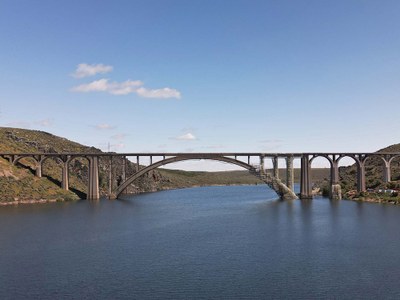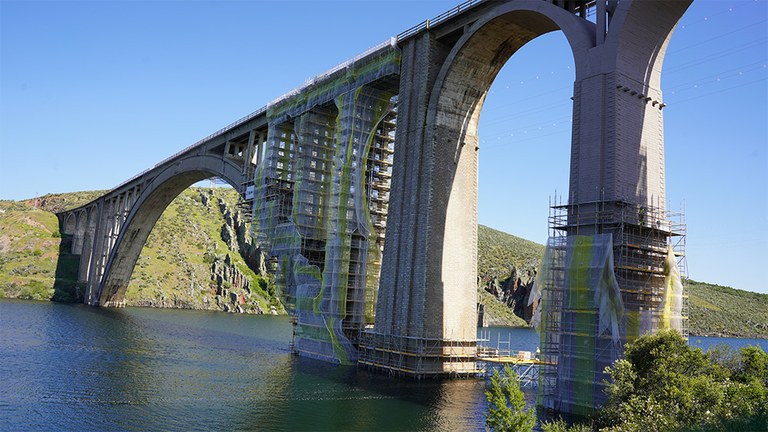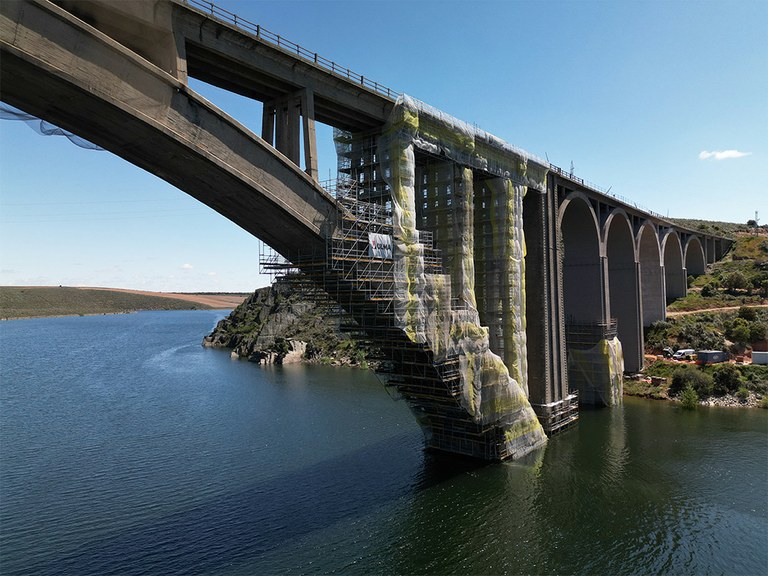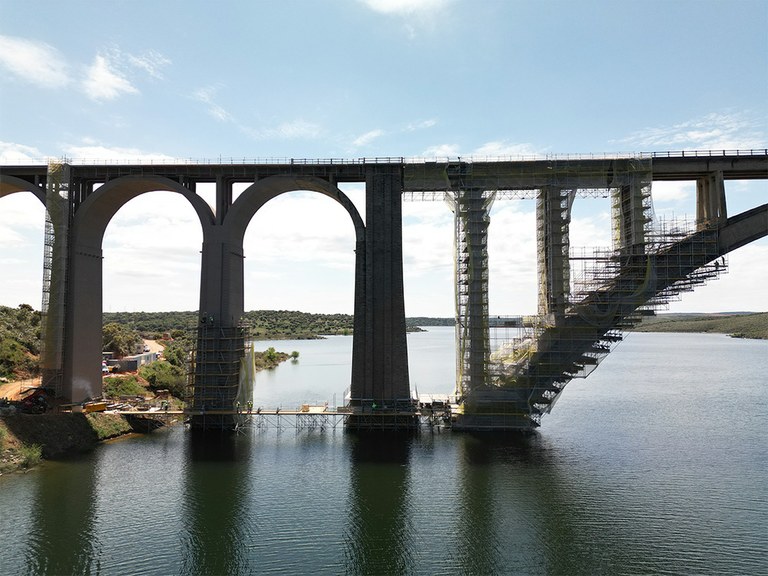Rehabilitation of the Historic Martín Gil Railway Viaduct in Zamora
Designed by engineer Martín Gil in collaboration with Eduardo Torroja, the original project incorporated an innovative steel truss as part of the concrete reinforcement. This truss was electrically welded — a pioneering technique at the time.
The current intervention addresses damage identified in the structure, such as cracks, spalling, and reinforcement corrosion. Aiming to ensure its long-term preservation and functionality, the works include the replacement of masonry blocks, surface cleaning, and strengthening of structural elements. The complexity of the terrain and the size of the viaduct have required highly precise technical solutions.
A key aspect of the project is the use of the BRIO Multidirectional Scaffolding, specially adapted to the bridge’s complex geometry to provide access to all working areas — the arch, piers, deck, and sides of the viaduct. The assembly is carried out using successive cantilever sections, allowing smooth progress of the works.
This modular structure provides great versatility and safety, even in challenging areas such as the section between the central arch and pier 7, where an access walkway has been built from the start of the viaduct to facilitate material transport. “We are talking about around 300 tonnes on site. Working with reusable elements has been very complex, as the concrete contains an internal metal structure that significantly limits drilling options,” explains Jose Manuel López, Site Foreman at Jokisu Montajes.
Part of this walkway is supported by brackets arranged at the base of the pier, serving as a connection between them and speeding up the pace of the works. Fluctuations in the water level have required a redesign of some of the originally planned access solutions: “In the initial project design, a walkway was foreseen, but the reservoir conditions have changed. Half of it rests on the bed, and the other half has been built with MK trusses anchored to the footing of pier number 7, just before the central arch,” says Olimpio Piñeiro, Assembly Coordinator at ULMA.
One of the main challenges has been adapting the scaffold installation to a structure with complex geometry, difficult access areas, and variable conditions imposed by the reservoir. In this context, the modular MK System has been essential. Specifically, a support bracket anchored at the base of the pier’s heel was designed. This solution has proven particularly useful in areas inaccessible from the ground, where the instability of the reservoir bed prevented support points. Thanks to this approach, the works have progressed without compromising the stability of the viaduct.
In addition, working platforms have been installed every two metres in height, equipped with guardrails and collective protection systems. The BRIO system includes built-in safety features such as toe boards and handrails which, together with the use of double-hook harnesses, ensure a safe working environment.
The scaffolding anchors, custom-designed according to the bridge’s load and shape, vary between side-face systems every four metres, reinforced French ties, and special anchors (on the lateral faces of the arch and deck, and vertical anchors beneath the arch), allowing secure fastening throughout the structure. In the central arch, the scaffold is suspended from the underside of the arch face, using cantilevered sections and platforms that enable access to its entire surface.
With this intervention, the Martín Gil Viaduct has been prepared to remain part of the Zamora landscape for many decades to come, keeping alive an engineering legacy that defined an era. Juan de Dios, Site Manager at imesAPI, highlights the collaboration with ULMA: “I would emphasise their reliability, safety, and logistics.”
Learn all about the project in this video.







